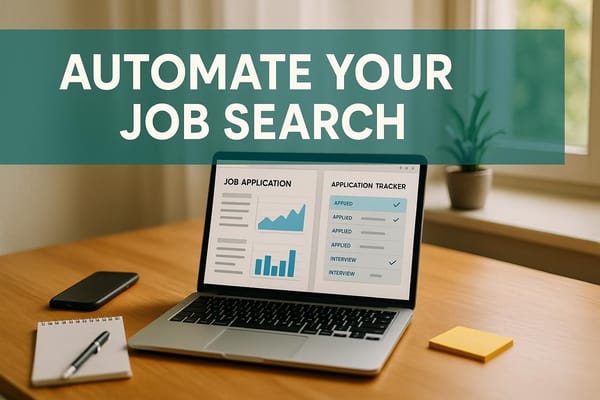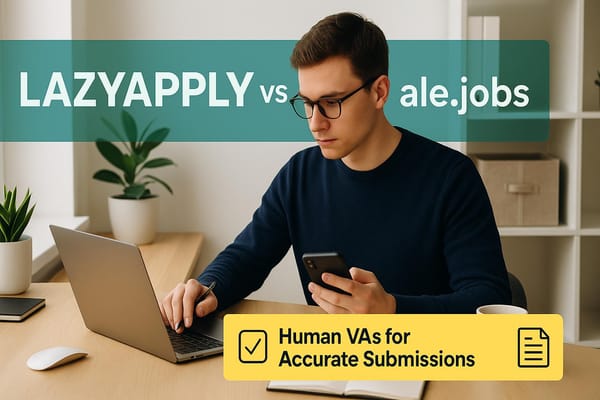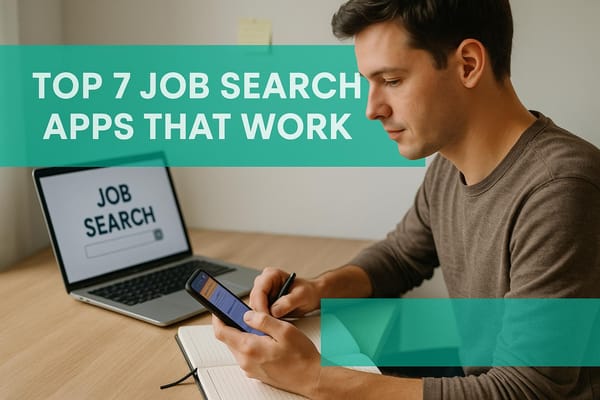How to Conduct Competency-Based Skill Assessments
Learn how to implement competency-based skill assessments to enhance hiring processes, align skills with business goals, and foster employee growth.
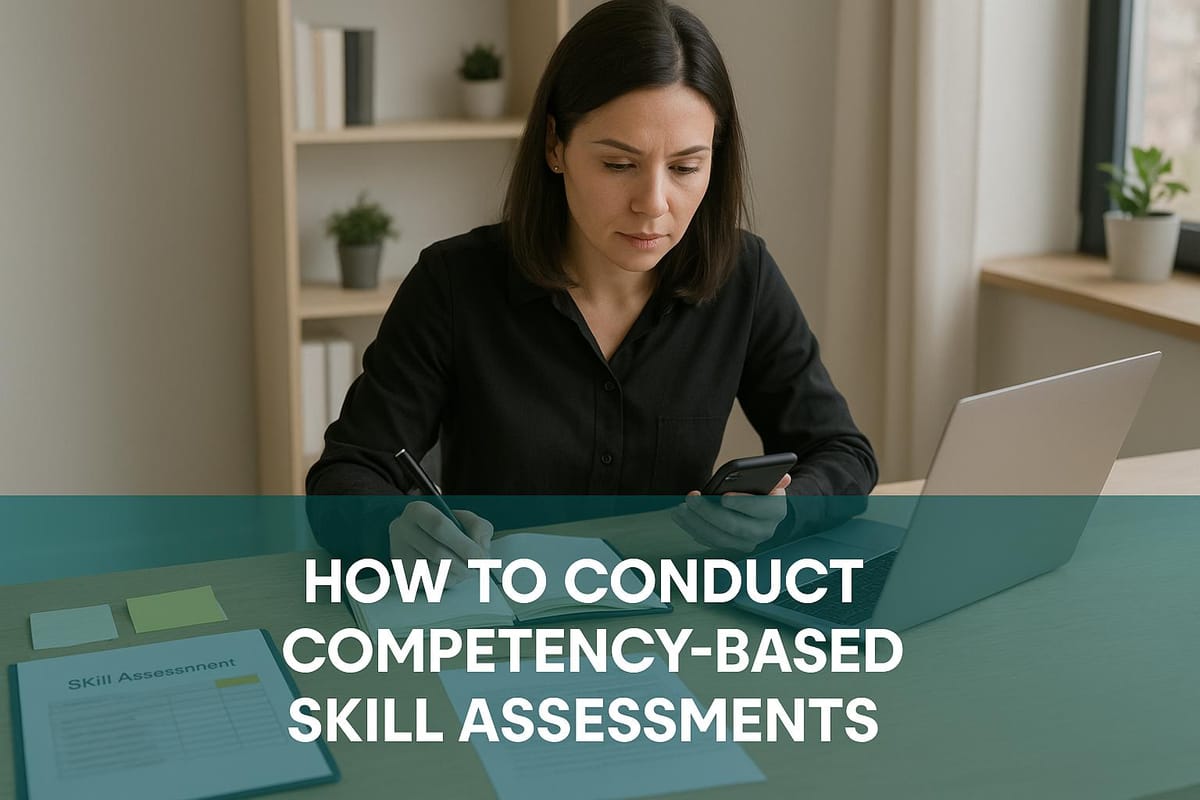
Competency-based skill assessments focus on evaluating measurable abilities and performance rather than relying on resumes or degrees. This method helps organizations hire better, reduce turnover, and align skills with business goals. Here's a quick overview of the process:
- Define role-specific competencies: Break down job responsibilities into technical (e.g., coding) and behavioral (e.g., teamwork) skills.
- Create measurable indicators: Use clear, observable actions to define success for each competency.
- Design assessment methods: Combine tools like skills tests, interviews, and simulations tailored to the role.
- Standardize scoring: Train assessors, use structured rubrics, and ensure fair evaluation.
- Provide feedback: Deliver actionable insights and development plans based on assessment results.
- Refine and scale: Use feedback to improve and expand the program across teams.
This approach ensures clear expectations, fair evaluations, and ongoing growth for both employees and organizations.
Competency Assessment: Guide and Best Practices
Step 1: Identify and Define Role-Specific Competencies
Building an effective competency-based assessment starts with pinpointing the exact skills, knowledge, and behaviors needed for success in a specific role. This goes beyond the surface-level job description, diving into what truly drives performance.
Begin by breaking the job description into its core elements. List out the key duties and responsibilities, then link each to the specific competencies required to perform them well. For instance, if a role involves "project management", you might identify competencies like timeline planning, resource allocation, and stakeholder communication. This detailed breakdown ensures no crucial skill is overlooked.
To get a complete picture, engage with organizational stakeholders who have firsthand knowledge of the role. Managers, HR professionals, and team leads can provide insights through interviews or workshops, often highlighting competencies not explicitly mentioned in job descriptions - like managing shifting priorities or navigating internal politics.
Each competency should tie directly to business goals and the organization’s larger strategy. Ask questions like: How does this skill contribute to team success? What’s the impact if it’s missing? This alignment ensures your assessment framework is practical and supports broader organizational priorities. With a strong foundation of clearly defined competencies, you’ll be ready to design a targeted assessment framework.
Technical vs Behavioral Competencies
Understanding the difference between technical competencies and behavioral competencies is essential for creating well-rounded assessments.
- Technical competencies refer to job-specific hard skills, such as coding in Python, financial modeling, or data analysis.
- Behavioral competencies involve soft skills, like communication, adaptability, and teamwork, which influence how someone approaches their work and interacts with others.
For example, a software developer needs technical expertise in coding but also behavioral skills like clear communication to collaborate effectively with the team. Both types of competencies are important, but their weight varies depending on the role.
The balance between technical and behavioral skills should reflect the role’s priorities. A senior software engineer might need a stronger emphasis on technical skills (e.g., 70/30), while a project manager may require a more even split, such as 50/50. Consider factors like client interaction, leadership responsibilities, and the complexity of technical tasks to determine the right mix.
Even in highly technical roles, behavioral skills like problem-solving and adaptability play a critical part. Striking the right balance ensures your assessments align with the job’s real-world demands.
Create Observable and Measurable Competency Indicators
Abstract terms like "team player" or "good communicator" aren’t useful for assessments. To make competencies actionable, they need to be translated into specific, observable behaviors and measurable outcomes.
For example:
- Instead of "good communicator", define it as: "delivers clear, concise project updates to stakeholders during weekly meetings" or "writes technical documentation that allows team members to implement solutions independently."
- Replace "analytical skills" with: "analyzes complex datasets to identify trends and presents findings to senior leadership in a clear, actionable format."
These detailed descriptions clarify what success looks like and provide a clear basis for evaluation.
To ensure consistency, document these behaviors and outcomes in a competency matrix. This matrix maps each skill to its observable actions and measurable results, serving as a blueprint for assessments. Using action verbs and specific contexts makes the indicators precise and actionable, reducing subjective judgments.
Regularly updating this matrix ensures it stays relevant to evolving business needs and industry trends, keeping your assessments accurate and effective.
Step 2: Design a Competency-Based Assessment Framework
Once you've defined your competencies, the next step is to create a framework that standardizes how skills are evaluated. Think of this framework as your assessment blueprint, ensuring consistency and fairness when reviewing candidates or employees.
Your framework should outline specific proficiency levels for each competency, paired with clear behavioral indicators that show what success looks like at every level. This approach minimizes subjectivity, ensuring evaluations are fair and can withstand scrutiny.
It’s also important to make the framework role-specific and adaptable. Different positions require different skill sets and expertise levels. For instance, while both a junior developer and a senior architect might need coding skills, the depth and complexity of those skills will vary greatly. A well-designed framework captures these distinctions.
Consistency matters - not just for fairness, but also for legal compliance. When every assessment follows the same structured process, you reduce bias and ensure hiring and promotion decisions are defensible. Plus, this consistency helps you compare candidates more effectively and track employee growth over time. Establishing this framework naturally sets the stage for defining measurable proficiency levels.
Define Proficiency Levels
To make your framework actionable, you’ll need to create clear, measurable proficiency levels. A four-level structure works well: Developing, Competent, Proficient, and Expert. Each level should be defined by specific, observable behaviors. For example, a Competent project manager might be someone who successfully manages a $100K project while staying within 10% of the budget.
The goal is to make each level concrete and measurable. Avoid vague terms like "good" or "excellent", and instead focus on observable actions. This clarity removes ambiguity and ensures assessments are objective.
Document the expected outcomes and impact for each level. Higher proficiency levels should reflect broader influence, the ability to handle more complex challenges, and strategic thinking. For instance, an Expert communicator doesn’t just deliver polished presentations - they shape organizational strategy, mentor others in communication, and adapt their approach for diverse audiences.
You might also want to create customized scales for different types of competencies. Technical skills may require more detailed levels, while behavioral skills could use broader categories. The priority is accuracy in measurement, not forcing a one-size-fits-all model.
With these benchmarks in place, the next step is to align competencies with specific job roles.
Map Competencies to Roles
Mapping competencies to roles involves creating a detailed profile for each position, specifying which skills are essential, preferred, or optional, along with the minimum proficiency levels required.
Start by categorizing competencies based on their relevance to the organization: core, functional, and leadership. Core competencies - like communication and problem-solving - apply across all roles. Functional competencies are technical skills specific to a job, while leadership competencies grow in importance as roles expand in responsibility and scope.
For each role, develop a competency profile that outlines the required proficiency levels. For example, a marketing coordinator might need Competent-level social media management and Developing-level data analysis, while a marketing director would require Proficient-level strategic thinking and Expert-level stakeholder management. These profiles should clearly link to the responsibilities of the role.
When mapping, consider career progression pathways. Show how expectations evolve as employees move from individual contributor to leader. For instance, a team lead might need Proficient-level collaboration skills, while a manager would need Expert-level strategic planning. This approach not only guides employee development but also sets clear promotion criteria.
Finally, allow for flexibility in role requirements. Even within the same job title, the mix of competencies might vary depending on the team, company size, or industry. For example, a software engineer at a startup might need a broader understanding of business operations than one at a large corporation. Your framework should account for these differences while maintaining consistent evaluation standards.
To ensure accuracy, validate your competency maps with subject matter experts. Their insights will help confirm that your assessments align with actual job demands and support long-term success.
Step 3: Select and Implement Assessment Methods
Once you’ve established your competency framework, the next step is to choose the right assessment methods for each competency. A mix of techniques often provides the clearest picture of a candidate’s abilities.
Match your methods to the type of competency being evaluated. For instance, technical skills are best assessed through hands-on tests, while behavioral skills benefit from structured interviews or realistic simulations. Keep in mind practical considerations like budget, time, and available expertise when making your selections.
Above all, ensure that the methods you choose are relevant and fair. This helps candidates see the connection between the assessment and job performance, encouraging full engagement.
Assessment Methods and Their Applications
Behavioral interviews are a go-to option for evaluating soft skills such as leadership, communication, and problem-solving. Using the STAR method (Situation, Task, Action, Result) helps structure these interviews to gather specific, real-world examples of past behavior. Since past performance often predicts future success, this method is particularly effective for assessing teamwork and adaptability.
Skills tests and technical assessments are ideal for measuring job-specific abilities. Whether it’s a coding challenge for software developers or a financial modeling task for analysts, these tests should mirror actual work tasks to be most effective. Avoid abstract or overly theoretical problems - realism is key.
Work simulations and role-playing exercises provide a window into how candidates perform in realistic scenarios. These methods are especially useful for evaluating complex competencies that require multiple skills. For example, a customer service simulation can test communication, problem-solving, and emotional intelligence all at once.
Psychometric assessments evaluate personality traits, cognitive abilities, and work preferences that influence job performance. While they shouldn’t be the sole method of assessment, they add valuable context. Cognitive ability tests, in particular, are strong predictors of success in many roles.
360-degree feedback collects insights from supervisors, peers, and direct reports, making it a powerful tool for assessing leadership and interpersonal skills. By gathering perspectives from multiple sources, this method reduces bias and provides a fuller view of a candidate’s impact on others.
Portfolio reviews and work samples allow candidates to showcase their best work and explain their decision-making processes. This approach works well for creative roles, consulting positions, or any job where the quality of output is crucial. It also provides a platform for competencies that might not emerge in other assessments.
| Assessment Method | Best For | Time Investment | Advantages |
|---|---|---|---|
| Behavioral Interviews | Leadership, communication, problem-solving | 1-2 hours | Reveals past behavior and decision-making |
| Skills Tests | Technical abilities, job-specific knowledge | 30 minutes - 3 hours | Measures required capabilities directly |
| Work Simulations | Complex, multi-skill competencies | 2-4 hours | Offers a realistic preview of job performance |
| 360-Degree Feedback | Leadership, interpersonal skills | 1-2 weeks | Reduces bias with multiple perspectives |
| Portfolio Reviews | Creative skills, strategic thinking | 1-2 hours | Highlights best work and thought processes |
Combine Multiple Assessment Techniques
No single method can capture every competency, so combining complementary techniques is essential. For example, pair behavioral interviews with skills tests: the former can reveal how a candidate approaches challenges, while the latter confirms they have the technical know-how to execute solutions. Similarly, psychometric assessments can add context to performance in simulations or work samples.
Sequencing is important when using multiple methods. Start with broader assessments to gauge overall fit and potential, then move to more specific evaluations of critical competencies. This approach not only saves time but also helps candidates feel more confident as they progress.
Be mindful of the total time investment for both assessors and candidates. While thorough evaluations are valuable, overly lengthy processes can frustrate candidates and even deter top talent. For most roles, aim for a total assessment time of 4-6 hours, with more extensive evaluations reserved for senior positions.
Finally, weight each method based on its relevance to the role. For technical positions, skills tests and work samples should carry more weight. For leadership roles, behavioral interviews and 360-degree feedback might take precedence. Transparency and consistency in weighting are crucial to ensure fairness.
Document your assessment strategy clearly. Outline the methods you’ll use, how they’ll be scored, and how results will be combined. This not only ensures consistency across assessors but also provides a basis for refining your approach over time. A well-documented process paves the way for objective scoring in the next phase.
Step 4: Conduct and Score Assessments Objectively
Now that you've outlined the competencies and chosen your assessment methods, it's time to focus on evaluating candidates objectively. The key here is rigorous assessor training and a consistent scoring process. Even the best-designed framework can falter without skilled, unbiased evaluators who follow a structured approach.
Objectivity doesn’t just happen - it requires intentional effort. This means training assessors to recognize and address biases, using clear scoring criteria, and implementing processes that ensure evaluations are based on observable behaviors rather than personal impressions. The goal is consistency: multiple assessors should arrive at similar conclusions when evaluating the same candidate. Let’s break this down further.
Train Assessors for Fair and Objective Evaluation
Start with bias awareness training to help assessors recognize how subconscious factors - like a candidate’s name, appearance, or speaking style - can influence their judgment. Studies have shown that even well-meaning professionals can let these biases affect their decisions. Awareness is the first step toward countering this.
Effective training should cover common types of bias and provide strategies to mitigate them. For instance, instead of relying on vague impressions like "seems confident", assessors should focus on specific, measurable behaviors. They might note that a candidate "shared detailed examples of leading three cross-functional projects" or "answered technical questions with clear reasoning and evidence."
Use structured evaluation rubrics to define what success looks like for each competency. These rubrics should include clear behavioral indicators and examples. For example, under a communication competency, “excellent” performance could mean "uses clear, jargon-free language", "asks clarifying questions", and "delivers responses with logical structure."
To ensure consistency, conduct sample assessments where multiple evaluators score the same recorded interview or work sample. Then, compare and discuss their ratings to identify discrepancies. This calibration process helps clarify expectations and ensures assessors are aligned.
Set clear ground rules for the assessment environment. Assessors should know how to handle unexpected situations, like technical glitches during a skills test or a visibly nervous candidate. Consistent handling of these scenarios ensures fairness for all participants.
Finally, require assessors to document specific behaviors and examples to justify their scores. This not only strengthens the evaluation process but also provides a clear record for future reference.
Score and Aggregate Results
Once assessors are trained and equipped, implement a structured scoring system to evaluate candidates objectively. Use numerical scoring scales aligned with your competency levels. A simple scale (e.g., 1-5) works well, where 1 indicates "does not meet expectations", 3 means "meets expectations", and 5 represents "exceeds expectations."
Each competency should be scored separately to avoid the halo effect - where strong performance in one area influences unrelated scores. For instance, excelling in technical skills shouldn’t automatically boost a teamwork score unless there’s specific evidence of collaborative behavior.
Calibration sessions are critical, especially when multiple assessors are involved or assessments span several days. These sessions allow evaluators to discuss borderline cases and ensure scoring standards remain consistent.
Weight the scores for each competency based on its importance to the role. For example, in a software engineering position, technical skills might account for 60% of the total score, while behavioral competencies make up the remaining 40%. For management roles, these weightings might be reversed. Be transparent about these weightings and apply them consistently across all candidates for the same position.
Visualize results with competency profiles to highlight each candidate’s strengths and areas for improvement. Simple tools like radar charts or bar graphs make it easier to compare candidates and identify those who meet the minimum requirements. These profiles can also guide onboarding and development plans for successful hires.
Consider using software or spreadsheet templates to automate calculations and generate competency profiles. This reduces the risk of manual errors and ensures results are aggregated consistently. However, remember that technology should assist - not replace - human judgment when interpreting results and making final decisions.
Plan for score disputes by creating a process to review questionable evaluations. This could involve a senior assessor reviewing the original assessment or conducting a brief follow-up evaluation to clarify concerns. Having a clear dispute resolution process in place ensures fairness and avoids unnecessary delays.
The final step is to turn scores into actionable decisions. Set minimum thresholds for each competency, as well as overall performance. Candidates who meet these thresholds can advance to the next stage, while those who don’t should receive feedback on specific areas for improvement. This approach ensures that competency assessments translate observable behaviors into measurable outcomes, keeping the process fair and transparent.
Step 5: Provide Feedback and Development Plans
Once the assessment is complete and scores are calculated, the next step is turning those results into meaningful plans for growth. This is where competency assessments shift from being just an evaluation tool to becoming a springboard for professional development. The way feedback is delivered can either inspire individuals to improve or leave them uncertain about how to move forward.
Delivering feedback effectively requires thoughtful preparation and a focus on growth. Whether you're working with team members or external candidates, the goal stays the same: provide clear, actionable insights that connect current skills to future opportunities. This approach builds trust, reinforces your organization’s commitment to growth, and strengthens teams by linking evaluation to development.
Craft Constructive Feedback
Start with strengths and provide specific examples. Highlight areas where the individual excelled, using concrete examples. For instance, instead of saying, "You’re good at communication", try something like, "Your presentation outlined the project timeline clearly, and your responses to technical questions showed a deep understanding of the subject."
Address improvement areas with observable behaviors. Focus on actions rather than personality traits. For example, rather than saying, "You need more confidence", you could suggest, "During the problem-solving exercise, you hesitated to share your initial thoughts, even though your final solution was strong. Try verbalizing your thought process earlier in similar situations."
Use the sandwich method carefully. Acknowledge strengths, discuss areas for improvement, and end with encouragement about potential. However, avoid softening critical feedback too much - address skill gaps directly but with a supportive tone.
Connect feedback to practical outcomes. Explain how improving specific skills can enhance their career or team contributions. For example, "Strengthening your data analysis skills will enable you to make more informed recommendations, which is key for the senior analyst role you’re aiming for."
Provide context for scores. Frame results in terms of role requirements rather than comparisons with others. For instance, "This role requires advanced project management skills, like leading cross-functional teams of five or more. Your experience managing smaller teams shows strong foundational skills, and we can explore ways to expand that experience."
Invite their input. Asking questions like "How did you feel about the technical assessment?" or "What challenges did you face during the group exercise?" can uncover valuable insights. This approach not only shows you value their perspective but can also highlight factors that might not have been captured in the assessment.
This kind of feedback sets the stage for creating personalized development plans.
Build Targeted Development Plans
With feedback as the foundation, create development plans that focus on closing skill gaps. Prioritize 2–3 key areas that will have the greatest impact on their performance or career growth. For employees, consider both their current role and long-term goals within the organization.
Set clear, measurable goals using the SMART framework. For example, instead of saying, "Improve leadership skills", outline something more specific: "Complete a project management certification and successfully lead two cross-departmental projects within six months." This clarity helps track progress and ensures accountability.
Tailor learning methods to the individual. Technical skills might require training courses or hands-on practice, while behavioral skills often develop through mentoring, stretch assignments, or peer feedback. Consider their schedule, budget, and learning preferences when suggesting approaches.
Leverage internal expertise. Before turning to external resources, identify colleagues who excel in the areas where development is needed. Mentorship, job shadowing, or cross-functional projects can provide practical experience and knowledge-sharing opportunities.
Set realistic timelines. Some skills, like earning a certification, have clear timeframes, while others, like developing strategic thinking, may take months or even years. Build in regular check-ins to monitor progress and adjust the plan as necessary.
Align development with business goals. Link individual growth to organizational priorities. For example, if your company is expanding into new markets, developing language skills or cross-cultural competencies might be a focus. This ensures personal growth aligns with broader objectives.
Ensure access to resources. Provide the tools and support needed to make the plan actionable. This might include training budgets, access to learning platforms, or introductions to subject matter experts. Be clear about what’s available and help navigate any approval processes.
Establish accountability. Schedule regular follow-ups - at 30, 60, and 90-day intervals - to review progress, address challenges, and celebrate milestones. Recognizing small achievements along the way keeps motivation high.
Explore team-wide opportunities. If multiple people share similar development needs, consider group training sessions or collaborative projects. This can be more cost-effective and foster peer support networks, while also building organizational capabilities.
Document everything. Keep detailed notes on the feedback discussion, goals, and commitments. This ensures consistency and provides a reference point for future conversations.
The development planning process should feel collaborative, not one-sided. By involving individuals in setting priorities and choosing learning methods, you encourage ownership and engagement. This approach ensures alignment between personal aspirations and organizational needs, paving the way for meaningful growth.
Step 6: Refine and Scale Your Competency-Based Assessment Program
After conducting objective evaluations and implementing targeted development plans, the next step is to refine your framework. A well-designed program should adapt to changing business needs and maintain credibility as roles and industry standards evolve. By building on structured assessments and objective scoring, refining and scaling your program ensures it remains effective over time.
This process improves participant engagement, enhances evaluation accuracy, and ensures alignment between individual skills and organizational goals. The best programs treat their frameworks as dynamic systems that adapt to meet new challenges.
Collect Feedback from Stakeholders
Gathering feedback is crucial to refining your assessment program. Here are some practical ways to do this:
- Collect immediate feedback after each cycle. Assessors often notice when specific competencies are difficult to evaluate or when scoring criteria need adjustment. Address these observations promptly.
- Survey participants within 48 hours of their assessment. Ask about their experience, clarity of instructions, and whether the assessment accurately reflected their skills. Pay attention to feedback on time constraints, technical issues, or areas where participants felt unprepared.
- Conduct quarterly reviews with managers. Managers can provide insights into patterns, such as whether new hires struggle with skills they were assessed highly on. This feedback helps identify gaps in evaluation methods.
- Use anonymous feedback channels. Not all concerns or suggestions will surface in formal reviews. Anonymous channels can reveal honest opinions about fairness, relevance, and effectiveness.
- Document successes and failures. Track examples where assessments accurately predicted success or missed critical gaps. This helps refine methods and improve accuracy.
- Analyze scoring patterns. Look for inconsistencies among assessors. If ratings vary widely for the same competencies, it may signal a need for clearer guidelines or additional training.
- Update competencies regularly. Roles and industry demands change over time. Ensure your program reflects current priorities and eliminates outdated criteria.
Scale Assessment Programs
Insights from feedback not only improve current processes but also guide the expansion of your program.
- Start small with pilot departments. Choose departments with supportive leadership and clear needs. This allows you to test and refine your framework before rolling it out across the organization.
- Standardize materials and tools. Create guides that define competencies, scoring criteria, and calibration exercises. Use scheduling tools to streamline coordination and avoid conflicts.
- Build adaptable competency libraries. Develop comprehensive databases tailored to specific roles. This ensures consistent evaluations while allowing flexibility for unique job requirements.
- Leverage technology for larger operations. As participation grows, manual processes can become overwhelming. Assessment platforms can automate scheduling, track results, and generate reports efficiently.
- Train internal champions. Identify team members in each department who can advocate for the program, answer questions, and provide local support as the program scales beyond HR’s direct oversight.
- Monitor quality metrics. Track completion rates, participant satisfaction, and assessor consistency. These metrics help identify and address issues early.
- Establish governance structures. Form committees with representatives from various departments, HR, and senior leadership to oversee program changes and ensure alignment with organizational goals.
- Plan resources carefully. Scaling from 50 to 500 participants requires additional assessors, accessibility accommodations, and administrative support.
Scaling takes time and thoughtful planning. Expanding too quickly can compromise quality and create resistance among teams. By setting clear milestones and taking a methodical approach, you can grow your competency-based assessment program sustainably while maintaining its effectiveness and trustworthiness.
Is Jobscan Worth It? Reviews & Alternatives for Competency Assessment Prep
With competency-based evaluations becoming a critical part of hiring processes, selecting the right platform can significantly impact your job search. Many job seekers turn to platforms like Jobscan to prepare, as it’s known for helping tailor resumes to specific job postings. However, when it comes to the broader demands of competency-based assessments, Jobscan’s approach falls short.
Enter scale.jobs - a platform that combines AI-driven tools with human expertise to provide a more comprehensive solution. From resume building to interview prep, scale.jobs aligns every step with the requirements of competency-based evaluations. Let’s explore why scale.jobs stands out as the better choice for job seekers tackling these assessments.
Why scale.jobs Outshines Jobscan
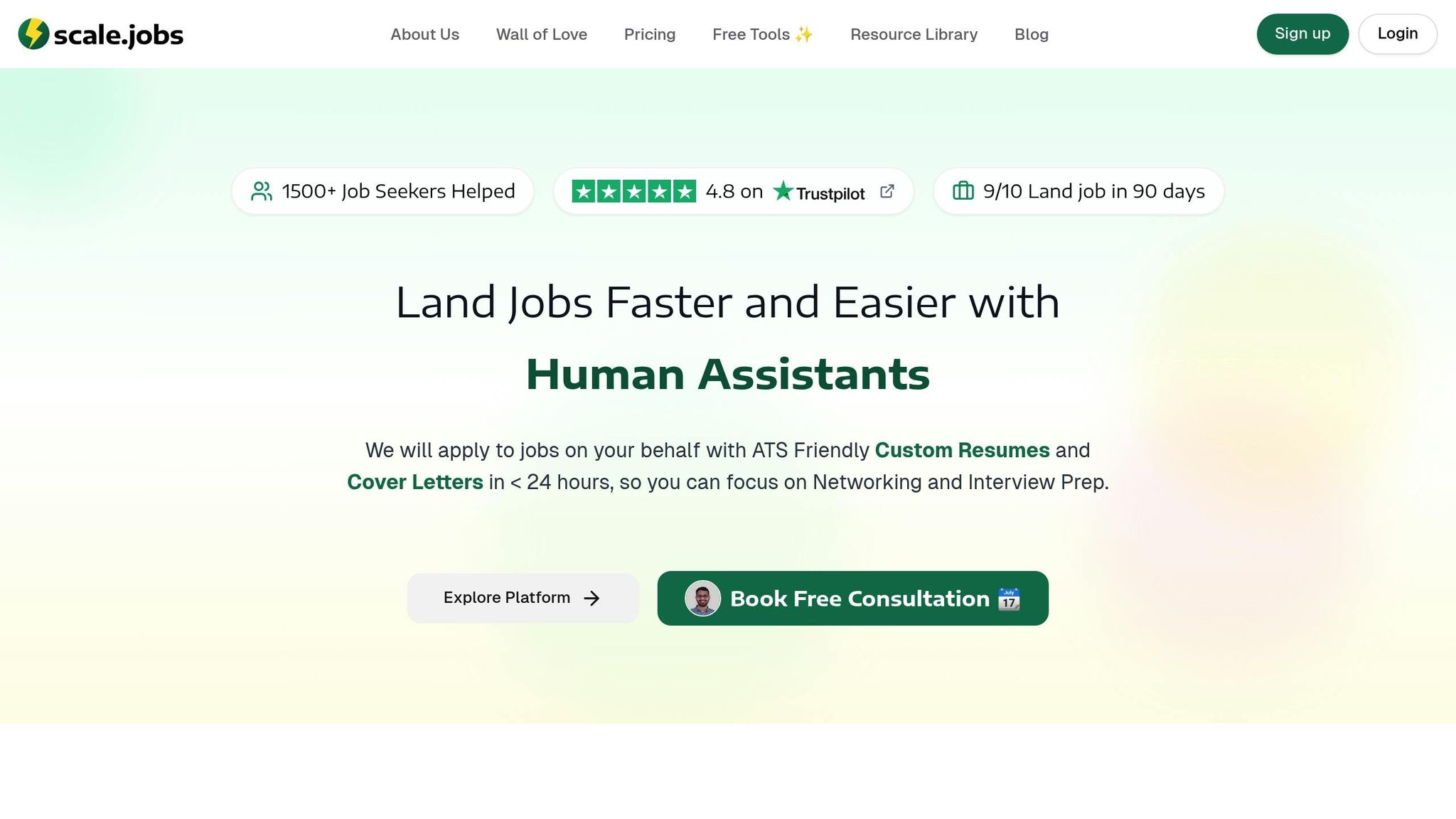
Here’s how scale.jobs delivers a more effective experience compared to Jobscan:
- Human-Driven Application Support: Unlike Jobscan, which relies solely on algorithms, scale.jobs employs trained virtual assistants and reverse recruiters. They focus on identifying and showcasing the specific competencies that hiring managers value.
- Real-Time Updates and Accountability: With tools like WhatsApp updates, scale.jobs ensures transparency and keeps you informed every step of the way. This hands-on approach guarantees that applications truly reflect your skills - something automated reports from Jobscan can’t replicate.
- Flat-Fee Pricing Model: While Jobscan charges recurring monthly subscriptions, scale.jobs offers one-time payment bundles. Starting at $199 for up to 250 job applications, this pricing structure is ideal for those seeking long-term support without ongoing costs.
- All-in-One Services: scale.jobs integrates resume optimization, cover letter creation, interview prep, and application tracking into a single platform. Jobscan, on the other hand, focuses primarily on resume keyword analysis.
- Tailored Strategies for Unique Needs: Whether you’re an immigrant navigating visa challenges or transitioning careers, scale.jobs provides personalized guidance. Their human assistants craft strategies to highlight your unique competencies - something Jobscan’s automated tools simply can’t match.
Tools to Ace Competency-Based Assessments
scale.jobs offers an impressive lineup of tools designed to help you excel in competency-based evaluations:
- ATS-Friendly Resume Checker: This tool identifies keyword gaps and provides actionable feedback on how to quantify achievements and showcase key competencies.
- Interview Question Predictor: By analyzing job descriptions, this feature anticipates behavioral and situational questions. It helps you prepare concrete examples and success stories to demonstrate your skills - an area Jobscan doesn’t address.
- AI-Powered Resume and Cover Letter Creation: For just $9 per month (launch offer), scale.jobs’ AI Assistant Pro generates customized documents that emphasize role-specific competencies without locking you into multiple subscriptions.
- Portfolio Website Builder: Showcase your work samples, case studies, and projects in a professional portfolio. This feature gives hiring managers visual proof of your abilities - something a traditional resume often can’t do.
- Application Tracker: Keep detailed records of your job applications, track competency requirements, and refine your approach over time using data-driven insights.
Additionally, scale.jobs offers targeted support for immigrant job seekers. They help present international experience and credentials in a way that resonates with U.S. employers. With a 24-hour turnaround for custom resumes and cover letters, the platform ensures you’re always ready to seize new opportunities in today’s fast-paced job market.
Conclusion and Next Steps
Competency-based assessments are transforming hiring by moving away from traditional methods and focusing on evidence-based decision-making. By using the six-step framework detailed in this guide - starting from defining role-specific competencies to scaling your assessment program - companies can create a solid system to identify top talent while minimizing hiring bias.
Achieving success in this approach takes careful planning and consistent execution. Organizations that dedicate time to defining clear competencies, training assessors, and using diverse assessment methods often experience better hiring outcomes. Beyond hiring, competency assessments also lay the groundwork for employee development and help drive overall organizational progress.
For job seekers, preparing competency-focused examples tailored to specific roles can provide a significant advantage. Highlighting relevant skills and experiences aligned with a job’s requirements can make all the difference in standing out to employers.
To get started, companies might consider launching a pilot program. Focus on identifying three to five key competencies for a specific role and design assessment tools that measure those skills effectively. For job seekers, platforms like scale.jobs can simplify the preparation process. These platforms combine AI-driven tools with human expertise to help applicants showcase the precise competencies employers are seeking. With a flat-fee model starting at $199 for 250 applications, real-time WhatsApp updates, and a 24-hour turnaround, scale.jobs offers tailored support to navigate today’s competency-driven job market.
Investing in competency assessments not only leads to better hires but also reduces turnover and enhances overall performance. By following the six-step framework, your organization can achieve clear, actionable results that set the stage for lasting success.
FAQs
How can organizations make competency-based assessments fair and unbiased?
To maintain equity in competency-based assessments, it's crucial for organizations to implement clear, role-specific competency definitions and utilize standardized evaluation tools. These measures provide a consistent structure for evaluating all candidates fairly.
Involving diverse panels of evaluators and using blind assessment techniques can further minimize the influence of unconscious bias during the process.
Providing evaluators with regular bias-awareness training and continuously improving assessment methods are also key steps. These practices not only ensure fairness but also enhance the accuracy of evaluations, making sure decisions are grounded in merit and the specific skills required for the role.
What are the best ways to assess both technical and behavioral skills during hiring?
When assessing technical skills, tools like skill tests, technical assessments, and hands-on simulations are excellent choices. These methods give employers a direct way to gauge a candidate's expertise and their ability to solve problems in areas specific to the role.
For behavioral skills, structured interviews using techniques such as the STAR method or behavioral event interviews are highly effective. Additionally, job simulation exercises can shed light on how candidates navigate practical challenges, showcasing soft skills like communication, teamwork, and flexibility.
By blending these approaches, you can gain a well-rounded view of a candidate's technical know-how and interpersonal abilities, leading to smarter hiring decisions.
How can companies leverage feedback from competency-based assessments to enhance their hiring process?
Organizations can leverage feedback from competency-based assessments to pinpoint weaknesses in their evaluation processes and fine-tune their hiring approach. By examining this input, companies can adjust their assessment tools to better reflect the skills and traits essential for specific positions.
Integrating feedback also promotes ongoing improvement, helping to minimize biases, increase fairness, and establish a hiring strategy rooted in data. This approach not only improves the quality of candidate matches but also strengthens the workforce and decreases employee turnover over time.

